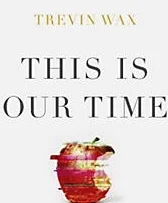The Faun's Book Shelf - A Review
A quick glance at the work of C. S. Lewis could cause the casual observer to divide his work into several distinct bundles. The first is his apologetic work, which was really his cause for fame, in which category I would include his substantial journalistic engagement. The second category that is easy to recognize is his fiction. And, the third category, which is often ignored by all but his more ardent fans, is his professional work in literary criticism.
All three categories are significant. And, in all three categories, readers get a consistent witness to the author. The ideas of C. S. Lewis are clearly present through three significantly different genres of writing. This sort of consistency is part of what makes Lewis worthwhile to read, even when some of the issues he addresses are no longer major topics of concern.
Though he is consistent throughout his work, C. S. Lewis’ fictional work is the most significant. In his technical work on literature, Lewis shows how culture has shifted regarding epistemology. In his apologetic and journalistic work, Lewis argues why it is better to be a Christian. However, in his fictional work, Lewis illustrates what is wrong with contemporary thought and how realistic, Christian modes of thought can make the world a better place.
By writing fiction, Lewis makes concrete what is somewhat abstract in his non-fiction writing. (Though as writers go, his non-fiction is much more concrete than most.) This is, in part, a result of his understanding of and reliance upon the power of myth.
In his recent book, The Faun’s Bookshelf, Charlie Starr traces the power of myth—or, in contemporary parlance, the power of story—in C. S. Lewis. The main argument is advanced on two levels: (1) Starr shows how Lewis uses pre-existing myth and weaves it into his fiction, (2) Starr also demonstrates how Lewis creates myth to convey his ideas in a convincing way. The exploration of these topics is set in the larger context of considering why myth matters and how it can be used by those of us who are not literary geniuses like C. S. Lewis. Starr, a former English professor, focuses on the work of Lewis, but his broader point applies to the use of myth and stories in all media and genres.
The book is divided into four parts, each with three chapters. In Part One, Starr explores the general definitions of myth, including the idea that myth may not mean fictional. Rather, Starr presents a vision of myth that is consistent with Lewis’: Myth may well be the careful retelling of true stories in an evocative, imaginative manner. Part Two examines how Lewis used pre-existing cultural myths in his fictional work to deepen the myth he is creating. For example, Lewis borrows Silenus from Greek mythology and puts him on the shelf of a Narnian faun with the book title, The Life and Letters of Silenus. Starr explores how that title reflects the Narnian longing for a better time of feasting and celebration.
In Part Three, Starr flips the script to examine the way that Narnian mythology questions the reality of our world, especially with titles like, Men, Monks, and Gamekeepers; A Study in Popular Legend. The reader knowns that men, monks, and gamekeepers exist—or that they existed—but those realities appear to be distant legends in Narnia. So may our myths bear the echoes of truth with a great deal more clarity than we realize. Part Four takes up more general questions necessary to understand Lewis’ approach to myth, by considering Lewis’ broader thinking on myth, the influence of Norse mythology in his life, and taking up a somewhat obscure but important possible contradiction in the writing of Lewis on myth.
The Faun’s Bookshelf is a worthwhile book based on two distinct contributions. First, Starr has done good work in synthesizing Lewis’ thought on myth and providing context for much of his use and reuse of myth. This makes the book a valuable resource for Lewis studies. Second, the book takes up the important question of the power of stories to shape culture. As people grapple with the acquisition of meaning and the power of myth, a study that shows how an expert used fiction to deepen reality is a welcome contribution.
This book will be most interesting for those that enjoy Lewis already. It is well-written in accessible prose, so that it should not be consigned to the stacks of academic libraries. The Faun’s Bookshelf would be an excellent secondary text for a university level course on C. S. Lewis, or even as part of a high school elective. Meanwhile, the book explores important questions that can deepen ongoing discussions on Christian participation in the arts.
NOTE: I received a gratis copy of this volume from the publisher with no expectation of a positive review.
























The hope of Christians for creation is not that we will be able to make things entirely correct through our efforts. Rather, we work with the knowledge that we have been given a ministry of reconciliation, which includes all of creation (cf., Col 1:20; 2 Cor 5:16–18). We work toward reconciliation in hope, but recognize that hope will not be fulfilled until Christ comes again. Creation exists in futility in the present age because of God’s curse on creation. (Gen 3:17–19) Our task is to till the ground in hope, making our living, (Gen 3:20) looking forward to the moment when God supernaturally sets everything right.